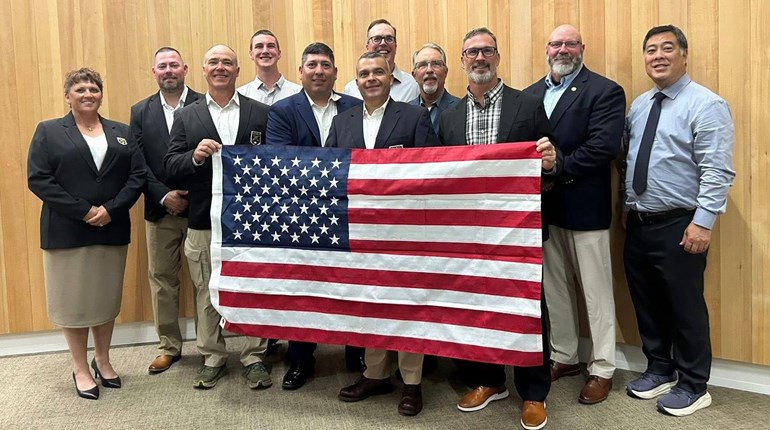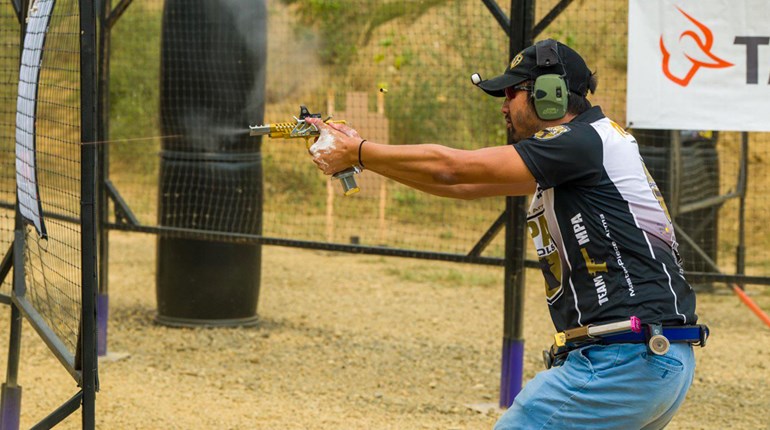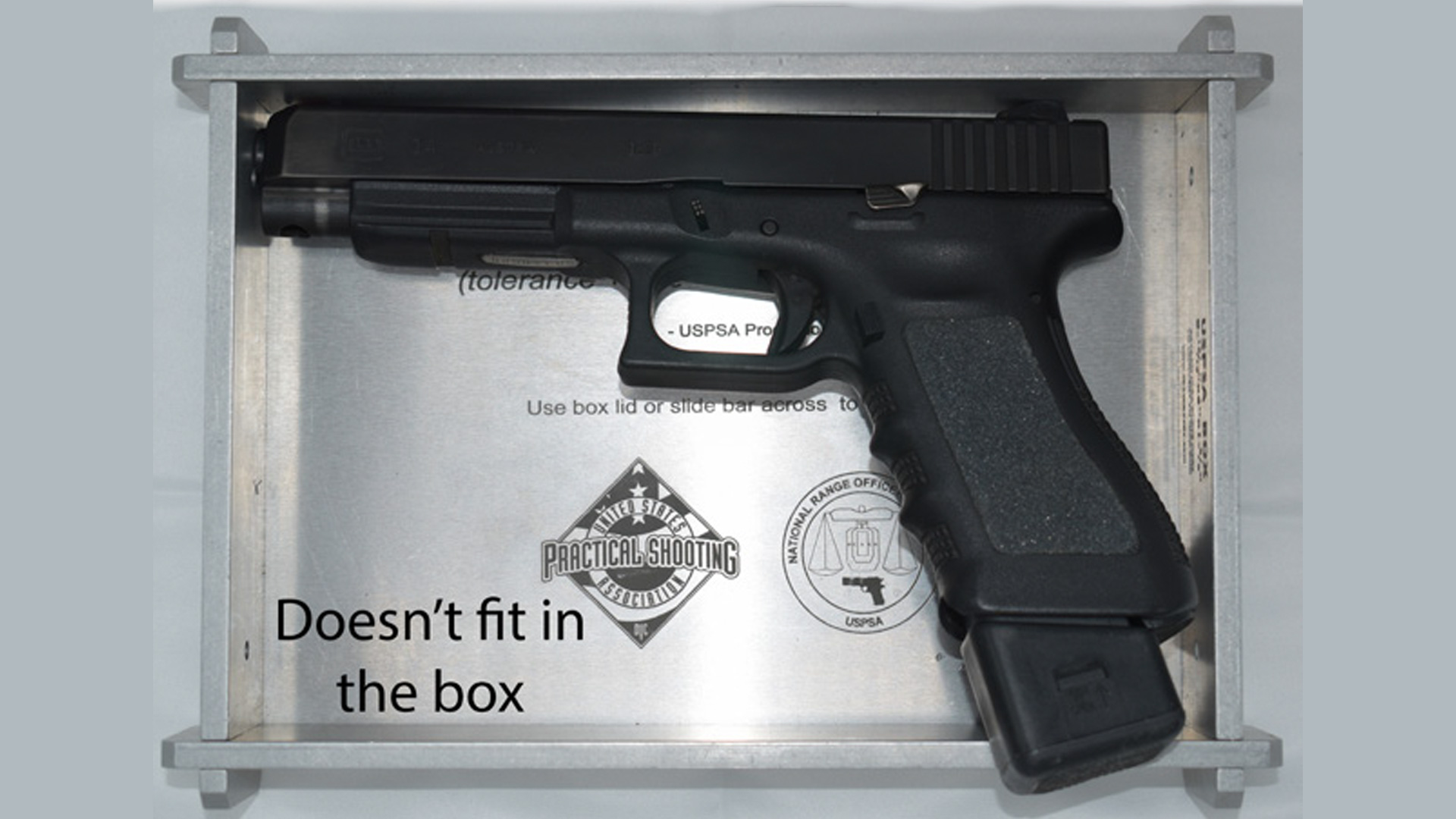
Most USPSA divisions measure legal magazine length using the USPSA Magazine Gauge or the USPSA Box. Unfortunately, most competitors don’t bother checking their equipment with these tools before attending a major match, only to receive unpleasant news when they visit chronograph for the equipment check. Do you know how to properly check your equipment with these tools?
Step one is to consult Appendix D in the USPSA rulebook for your division of choice to find out the length parameters for magazines and how they are measured. Open, Limited, Limited-10 and Carry Optics use the USPSA Magazine Gauge; Production and Single Stack use the USPSA Box, and the handgun with an empty magazine inserted must fit in the box. Open has a maximum length of 171.25 mm (one side of magazine gauge), and the other three divisions have a max length of 141.25 mm (other side of magazine gauge). However, in Limited and Limited-10, if you are shooting a single-stack gun, the maximum length is 171.25 mm.
Step two is to either purchase an official USPSA Magazine Gauge (manufactured by Evolution Gun Works, a.k.a., EGW) or USPSA Box (manufactured by Shockbottle), or borrow these items from a friend or even from your home club. There is also an older model of the USPSA Box that EGW no longer produces that is all black with a hinged lid which is still legal to use. Many clubs own this model. If you are hosting a local match, have these items available for competitors to check their equipment before the match starts. It is much better for competitors to test their equipment at a local match, ahead of attending a major match. Also, most major matches allow courtesy checks at chronograph for competitors who are not currently scheduled to be shooting.
Step three is to measure your gear, and here are some pointers on how to do it properly. If your equipment doesn’t fit, fix it. Then you will not have issues at matches.
USPSA MAGAZINE GAUGE
Appendix E1 in the USPSA rules describes how to use the magazine gauge: The magazine shall be placed into the gauge without significant force or depression. It must lie so that the back of the magazine is flush against the gauge. The follower may be depressed, or slight pressure may be applied, to ensure proper fit. Some non-telescoping base pads fit loosely on the bottom of the magazine, hence the magazine may need to be “clicked in” on the mag gauge, using slight pressure. If the magazine fit or procedure is questioned, the Range Master’s call will be final.
Remember that your magazine should easily fit in the gauge and not be wedged into the gauge with significant force. The mag also needs to be able to go into the gauge multiple times and give the same result consistently. And the magazine feed lips must not gouge the gauge.

There is no “close enough” with the mag gauge. The magazine either fits or it doesn’t. To fit, the magazine must rest against the two little raised platforms on the gauge (Figure 1).
Here are a couple of magazines that fit in the gauge. Notice how no daylight is seen on the raised platforms under the magazines (Figure 2).
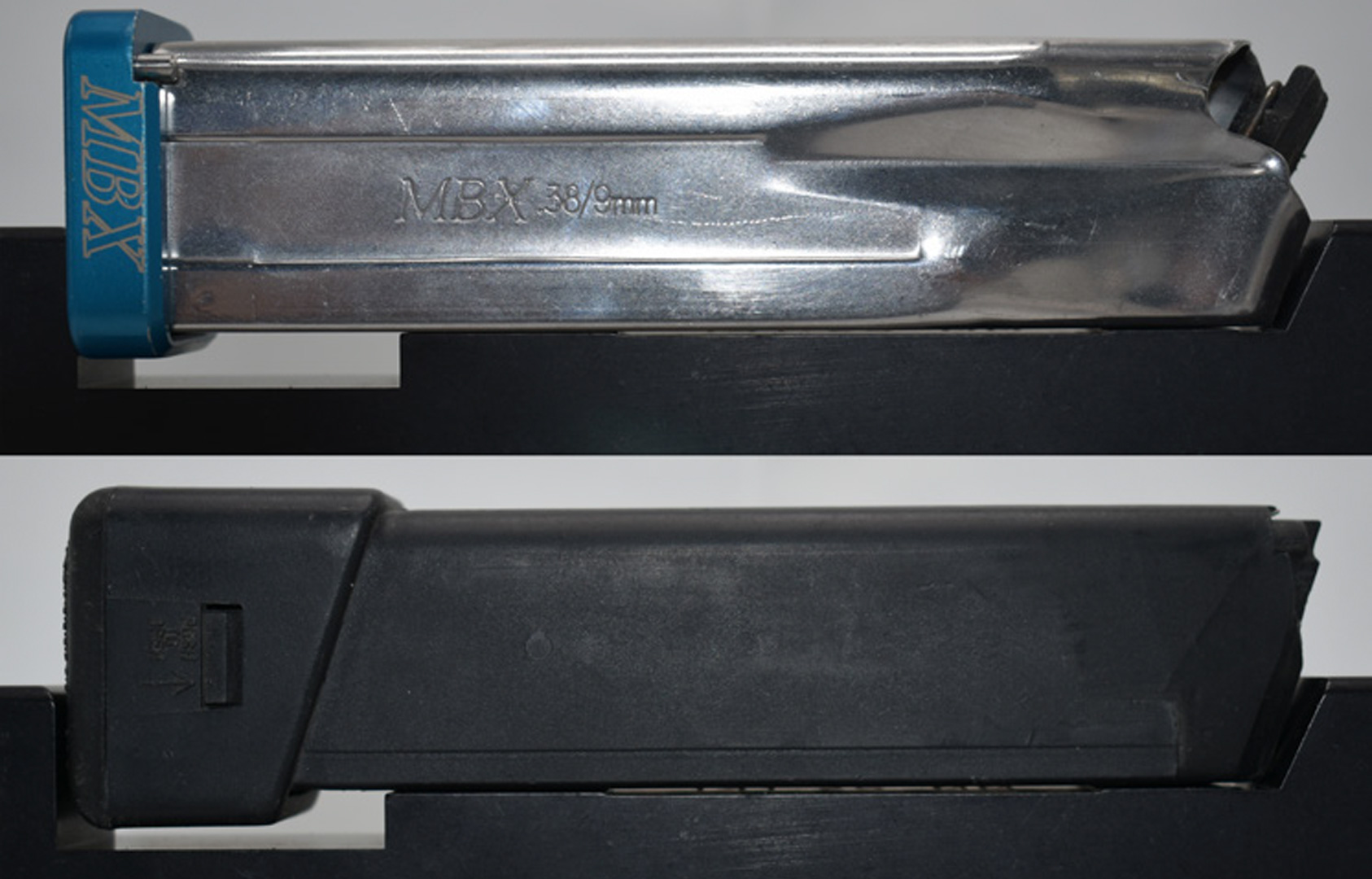
Sometimes the magazine base pad is too heavy, or the magazine has a slight warp. It is allowed to use slight pressure to press the magazine down. Notice how there is daylight on one platform before pressure is applied (Figure 3).
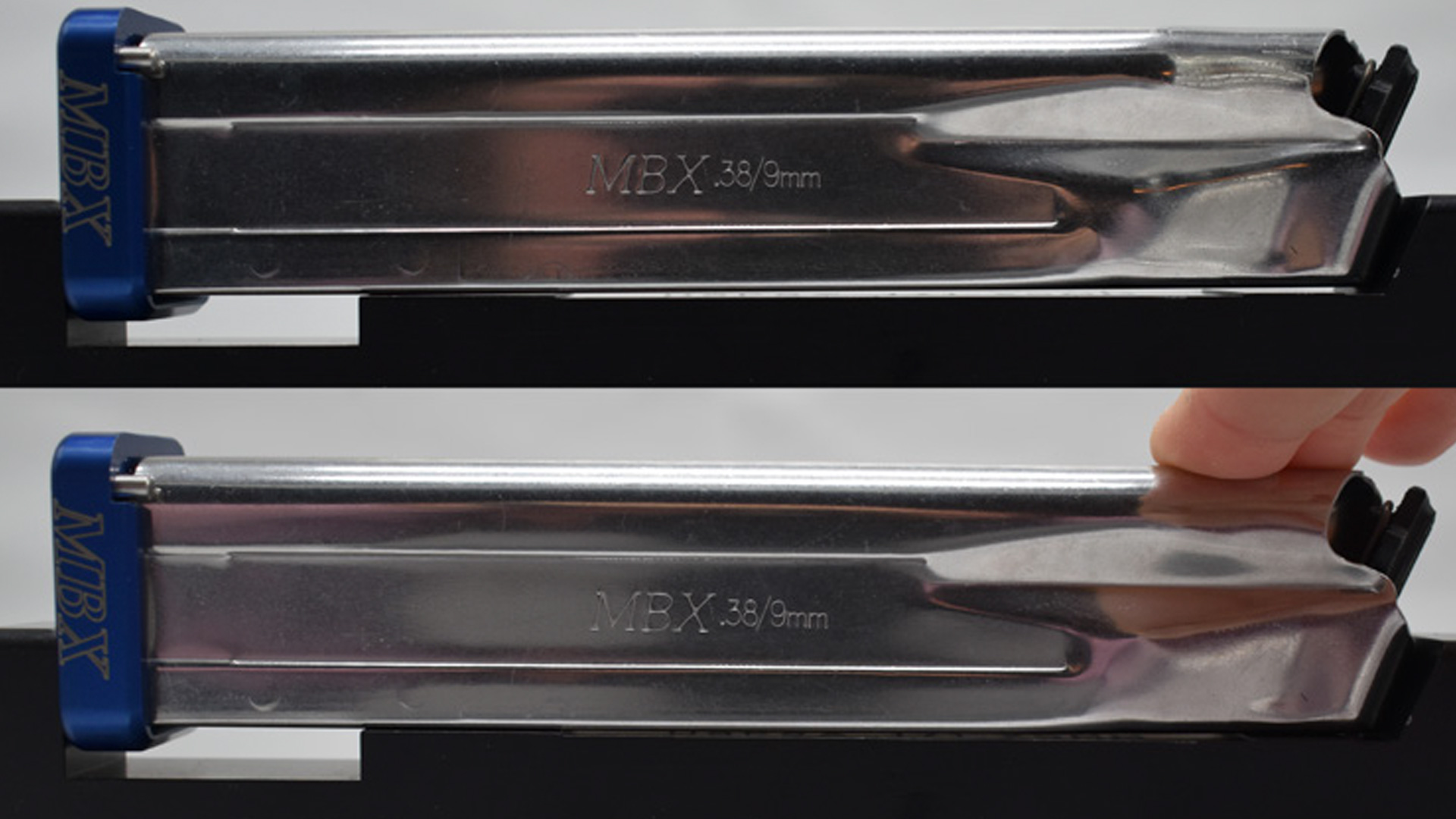
There are times that pressure is not going to solve the problem, because the magazine is too long, sometimes just by a millimeter or two. Just remember that base pads and tubes sometimes have enough variation that even magazines of the same manufacturer or combination of tubes and base pads might be too long. Sometimes a little sandpaper to the base pad is enough to solve the issue.

Additionally, be aware that adding grip tape to the base pad may also make the magazine too long. Here are two magazines that failed. The second one is just barely, but daylight can be seen above the raised pad, so it failed. Even if a manufacturer says their magazines are legal length, always double check. Factory 21-round SIG P320 magazines are known to be highly variable, so some fit in the gauge and some don’t (Figures 4 and 5).
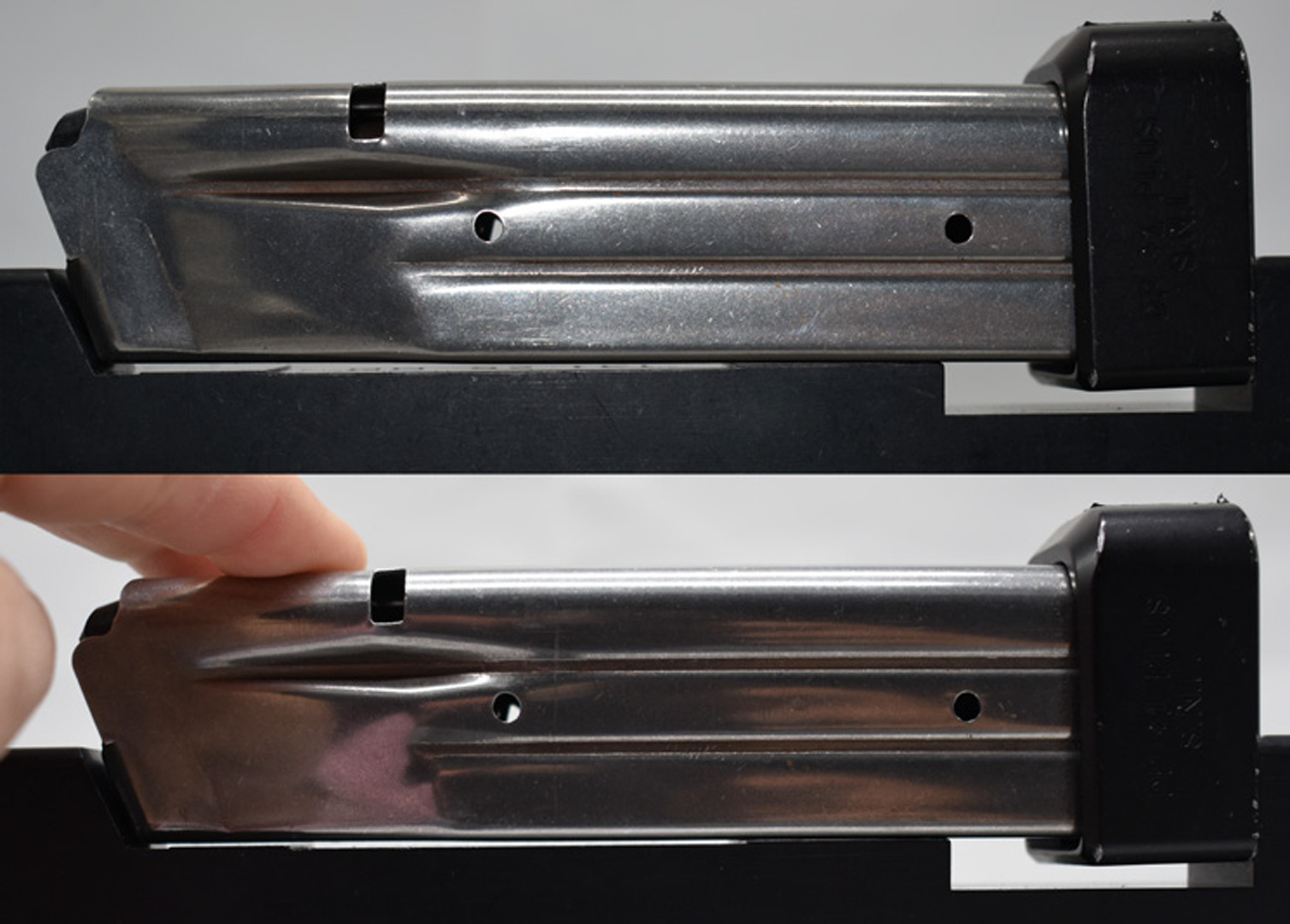
USPSA BOX
Now let’s discuss the proper use of the USPSA box. When we say the handgun has to fit in the box, it means all three dimensions—length, width and depth. And remember, it is the handgun with an empty magazine inserted.
One of the ways to run afoul of the box is with magazine base pads that are too long. In this example, it’s the same pistol but with different base pads. It is obvious which one fits, and which doesn’t (Figure 6).

Sometimes the handgun looks like it fits from above, but not when the depth is checked. Again, this is due to a magazine base pad that was slightly too long (Figure 7).

And everyone likes wide safety levers, but be cautious when adding ambidextrous safeties, especially if they have wide levers on both sides of the handgun. That could make the gun too wide to pass the box (Figure 8).
Article from the March/April 2023 issue of USPSA’s magazine.















